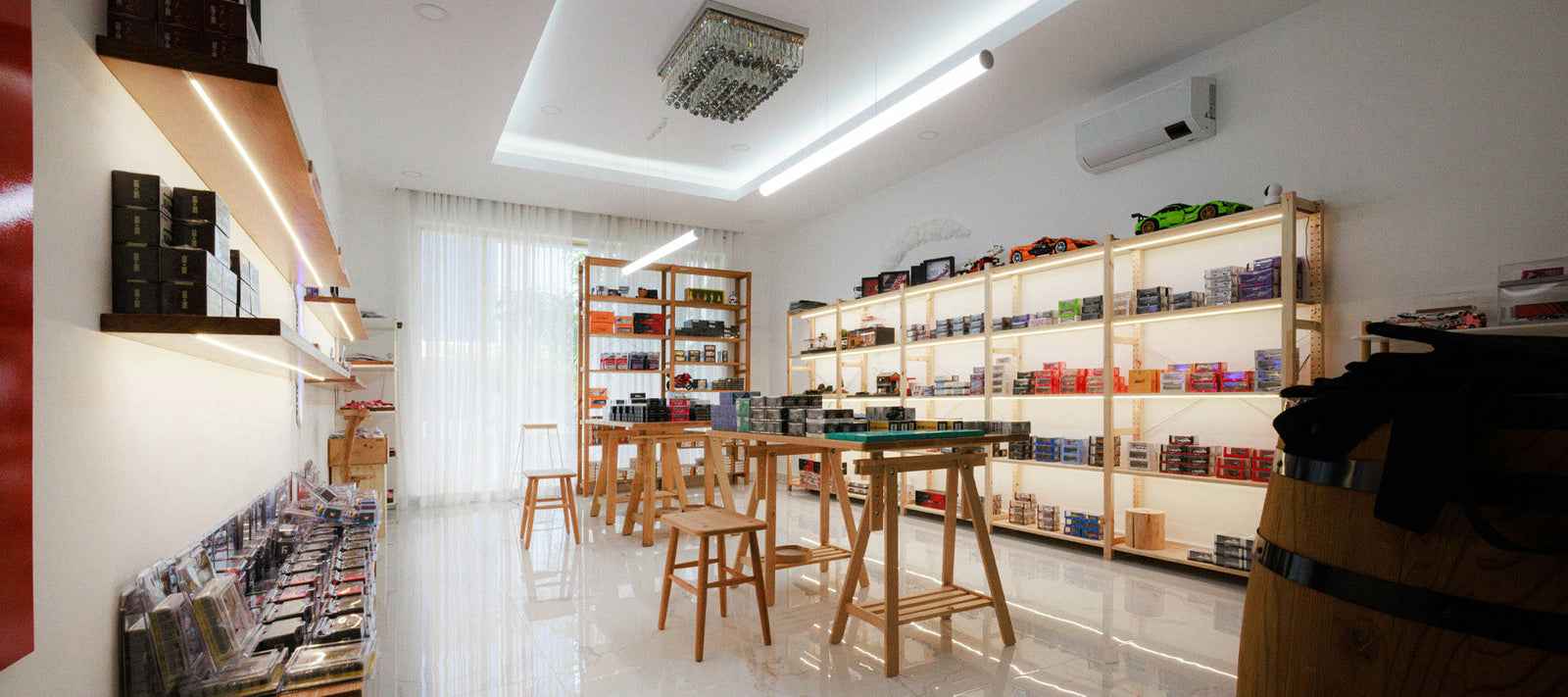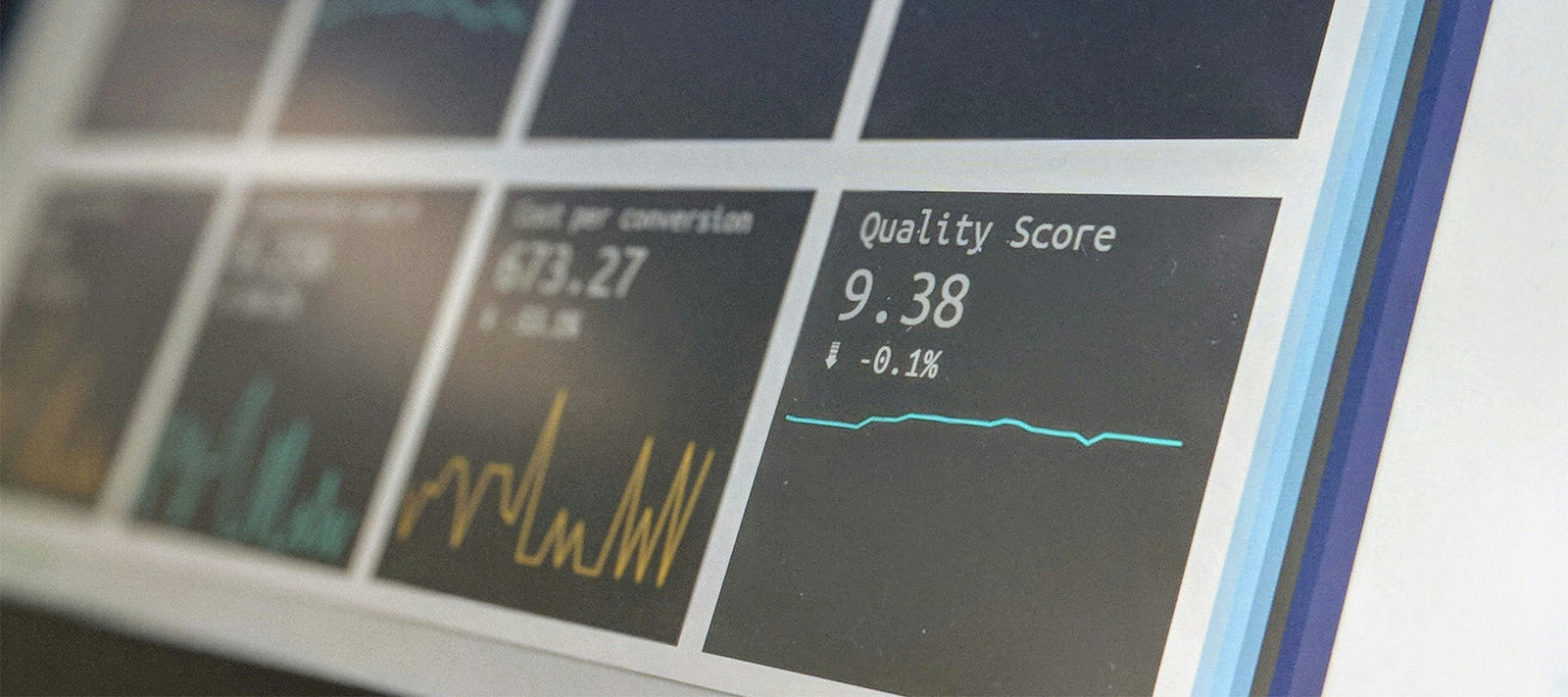The retail landscape is evolving rapidly, driven by advancements in technology and an ever-growing reliance on data. As retailers across Australia and the globe look for innovative ways to enhance the customer experience, one area that has seen significant transformation is retail design. Artificial intelligence (AI) and data are reshaping how retailers design and present their stores, allowing them to create more personalised, engaging, and efficient shopping environments. In this blog post, we will explore how AI and data are shaping the future of retail design and the key trends that businesses must embrace to stay ahead in an increasingly competitive market.
The Role of AI and Data in Retail Design
Traditionally, retail design focused on aesthetics, product placement, and creating a visually appealing in-store experience. While these elements are still important, the integration of AI and data is enabling retailers to go beyond surface-level design and offer deeper, more personalised experiences. By collecting and analysing data on customer behaviour, preferences, and interactions with displays, retailers can make data-driven decisions to optimise their retail spaces and maximise sales.
AI and data allow retailers to better understand their customers and anticipate their needs. This empowers them to design stores that are not only visually appealing but also tailored to meet the unique preferences of their target audience. The use of smart technology, sensors, and real-time analytics has opened up new opportunities for creating dynamic, interactive, and personalised retail environments that enhance the overall customer experience.
How AI is Transforming Retail Displays
AI is revolutionising the way retailers approach display design. From intelligent mannequins to virtual fitting rooms, AI-powered technologies are helping brands create more engaging and efficient retail environments. Here are some of the ways AI is influencing retail displays:
1. Personalised Customer Experiences
AI enables retailers to collect and analyse vast amounts of customer data, including purchase history, browsing habits, and preferences. This information can be used to create personalised shopping experiences, both in-store and online. For example, AI can recommend products to customers based on their past purchases, offer real-time promotions, or tailor display layouts to highlight products that are most likely to appeal to each individual shopper.
In retail stores, this could translate into dynamic displays that change based on customer interactions. For instance, an AI-powered system could detect a customer’s preferences as they browse and display products that align with their tastes or needs. This level of personalisation not only makes the shopping experience more enjoyable but also increases the likelihood of impulse purchases and conversions.
2. Smart Shelves and Interactive Displays
AI is also enabling the development of smart shelves and interactive displays that respond to customer actions. These displays use sensors and AI algorithms to track customer movements and provide real-time feedback. For instance, a display could detect when a customer picks up a product and provide additional information or recommendations on a digital screen. Alternatively, the display could adjust the layout or featured products based on customer interactions, offering a more tailored experience.
Smart shelves are another AI-powered innovation that allows retailers to track stock levels in real-time and automatically replenish products when inventory is low. These shelves can also display relevant content based on customer behaviour, such as highlighting popular products or offering promotions. This creates an engaging, interactive environment that encourages customers to explore and make purchases.
3. AI-Powered Visual Merchandising
Visual merchandising is a key element of retail design, and AI is making it more effective than ever. With AI, retailers can create data-driven visual merchandising strategies that optimise product placement, colour schemes, and overall store layouts. AI-powered tools can analyse customer behaviour patterns, including where they spend the most time in the store, what products they interact with, and which displays drive the most sales.
This data can be used to design store layouts that optimise customer flow and maximise sales. For example, AI can determine which products are most likely to capture customer attention and suggest optimal locations for those items. Retailers can also experiment with different display formats and track performance metrics to determine what works best for their target audience.
4. Augmented Reality (AR) and Virtual Reality (VR) Integration
AI is often integrated with augmented reality (AR) and virtual reality (VR) technologies to create immersive retail experiences. AR and VR can be used in-store to provide customers with interactive displays that showcase products in a dynamic, engaging way. For example, customers can use AR-enabled smartphones or smart glasses to visualise how furniture or home decor items would look in their own space. VR can also be used to create virtual stores or immersive shopping environments that simulate real-world experiences.
Retailers can use AI to enhance these experiences by providing real-time feedback and personalised recommendations based on customer preferences. AI-powered AR and VR experiences not only enhance the shopping experience but also allow customers to interact with products in ways that were previously impossible. This helps create memorable experiences that drive customer engagement and loyalty.
How Data is Shaping Retail Displays
While AI is the technology that powers many of these innovations, data is the fuel that drives them. By collecting and analysing data from various sources, retailers can gain deeper insights into customer behaviour and make informed decisions about their retail displays. Here are some ways that data is shaping retail design:
1. Customer Insights and Behavioural Analytics
Data analytics is crucial for understanding customer preferences, behaviours, and shopping patterns. Retailers can collect data from various sources, such as in-store sensors, loyalty programs, social media, and online interactions, to create detailed customer profiles. This data can be used to design retail displays that align with the specific needs and preferences of their target audience.
For example, if data shows that a particular demographic is more likely to purchase eco-friendly products, retailers can design displays that highlight these items. Similarly, data can reveal which products are most popular during certain times of the year, allowing retailers to optimise their displays for seasonal trends.
2. Real-Time Data for Dynamic Displays
One of the key advantages of data-driven retail design is the ability to create dynamic displays that can be adjusted in real time based on customer behaviour. By using sensors and AI algorithms, retailers can track how customers interact with displays and adjust the content accordingly. For example, if a particular product is receiving a lot of attention, the display could be updated to highlight similar products or offer promotions to increase sales.
Real-time data also enables retailers to monitor inventory levels and ensure that popular products are always in stock. This helps create a seamless shopping experience and prevents customers from leaving the store empty-handed. By leveraging real-time data, retailers can optimise their displays to meet customer demand and maximise sales opportunities.
3. Optimising Store Layouts with Data
Data can also be used to optimise store layouts and ensure that products are placed in the most effective locations. Retailers can track customer movements throughout the store and analyse foot traffic patterns to identify which areas are most visited. This information can be used to design store layouts that guide customers through the space in a way that maximises exposure to key products and displays.
For example, if data shows that customers spend more time in the left section of the store, retailers can place high-margin products or new arrivals in that area to increase visibility and sales. This level of data-driven design ensures that every inch of the store is utilised efficiently and strategically.
4. Personalised Marketing and Targeted Offers
In addition to enhancing in-store displays, data allows retailers to deliver personalised marketing messages and targeted offers to customers. By analysing data from customer loyalty programs, online behaviour, and purchase history, retailers can create highly personalised promotions that are relevant to each customer.
For example, if a customer frequently purchases certain types of clothing, the retailer can send them a personalised offer or display products that align with their preferences. This type of targeted marketing not only enhances the customer experience but also increases the likelihood of a purchase.
The Benefits of AI and Data in Retail Design
The integration of AI and data into retail design offers numerous benefits for both retailers and customers. Here are some of the key advantages:
-
Personalised experiences: AI and data allow retailers to create personalised shopping experiences that cater to individual preferences and needs, enhancing customer satisfaction and loyalty.
-
Increased sales: Data-driven retail displays optimise product placement, inventory management, and customer interactions, leading to higher conversion rates and increased sales.
-
Improved customer engagement: Interactive displays, smart shelves, and immersive AR/VR experiences create engaging environments that encourage customers to spend more time in-store and interact with products.
-
Efficient store operations: AI and data enable retailers to monitor stock levels, track customer behaviour, and optimise store layouts, leading to more efficient operations and reduced costs.
-
Competitive advantage: Retailers who embrace AI and data-driven design are better positioned to stay ahead of the competition and meet the evolving expectations of modern consumers.
Conclusion
The future of retail design is undoubtedly being shaped by AI and data. As retailers continue to embrace these technologies, they are able to create more personalised, dynamic, and engaging shopping experiences that drive customer loyalty and maximise sales. By leveraging data and AI-powered solutions, retailers can optimise their store layouts, enhance their displays, and provide customers with the tailored experiences they crave.
As the retail industry continues to evolve, staying ahead of technological advancements will be key to success. Retailers who invest in AI and data-driven design will be well-positioned to thrive in the competitive, customer-centric retail environment of the future.
By embracing the power of AI and data, retailers can unlock new opportunities, create memorable experiences, and lead the way in the next era of retail design.






